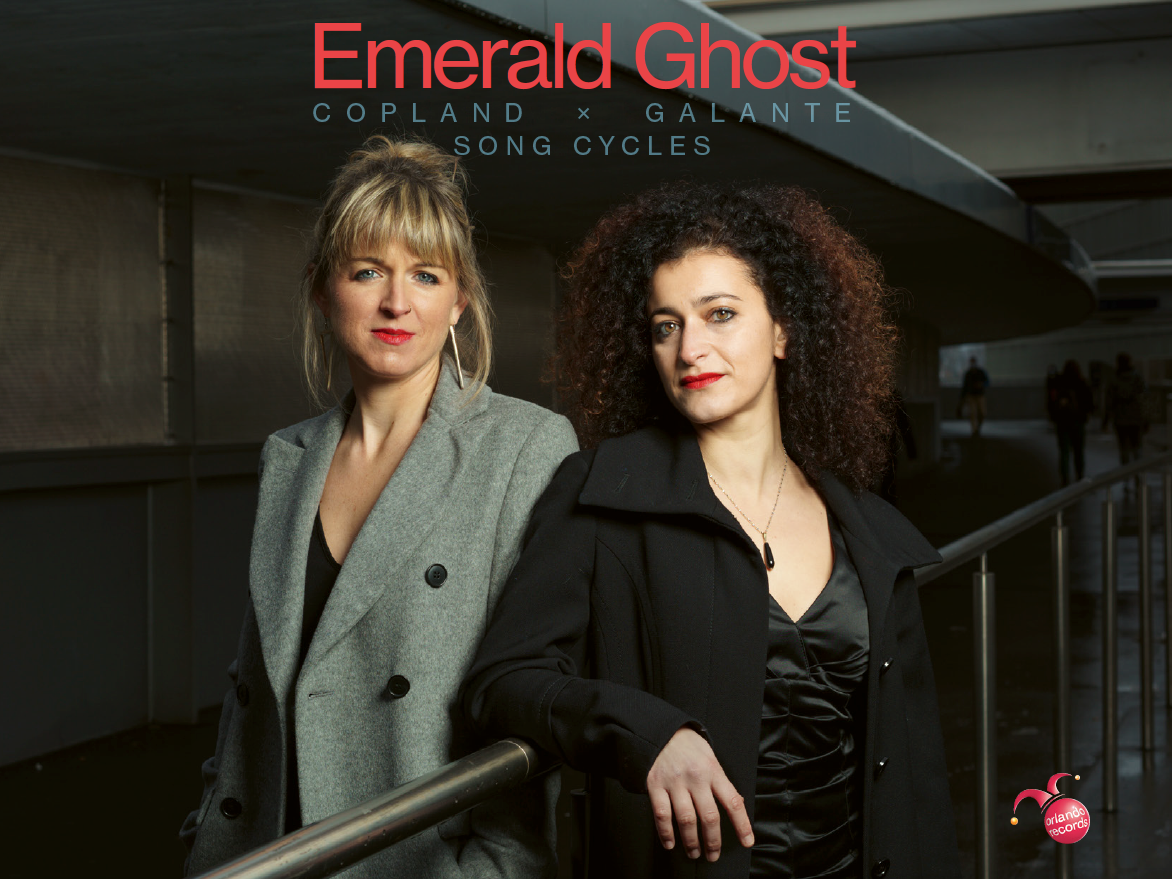New CD release and interview with Carlo Galante

Emerald Ghost‘s new CD is out now on Orlando Records!
Aaron Copland Twelve Poems of Emily Dickinson and Carlo Galante Nostra Signora degli Insonni is out now.
Recorded in April 2021 in Lottstetten, Germany.
INTERVIEW WITH CARLO GALANTE
Autumn 2021 sees the release of our first CD “Nostra Signora degli Insonni” –
Carlo Galante’s song cycle of the same name is featured alongside Aaron Copland’s “Twelve Poems of Emily Dickinson”. In this interview, Carlo talks about the inspiration behind the recording project, and why he thinks the two cycles fit together so well.
How did the idea to record Copland’s ‘Twelve Poems of Emily Dickinson’ alongside ‘Nostra Signora degli Insonni’ arise? How did Copland’s song cycle inspire you, and why did you think it would be a good fit for Emerald Ghost?
When I was a student, I bought the Copland score in the version for voice and orchestra because I wanted to study Copland’s orchestration; not so much as an analyst but as a composer. I was interested in the quality of the writing and the orchestration. It interests me so much that this year at the Milan Conservatory I taught a course on two english song cycles: Twelve Poems of Emily Dickinson and Britten’s Serenade. In an entirely dissimilar way, they are pieces of incredible orchestration and beauty.
Twelve Poems is a song cycle that follows the idea of the Lied – the affirmation through the voice of a poetic text. It being such a beautiful and complete cycle in English, I thought it would fit perfectly for Lucy. Each song has its own very strong identity, but at the same time it is part of a cycle, and has a very broad scope. Copland’s pianism is very complex and interesting, it is not a simple accompaniment but really an amplification of the expression of the voice and its meaning. The articulation is conjugated in a modern, twentieth-century sense. It is an important and very original work on how to accompany the voice.
The song cycle fits in well with Copland’s idea of new music, also from a political point of view: new music must be extremely complex and articulate in its specifically linguistic function, but at the same time it must be very perceptive. The message has to be strong and distinctly American, connoting the spirit of the nation. Copland had strong socialist sympathies and this is significant in his art, he puts his art and his extraordinary compositional technique at the service of a message that reaches the listener – a very clear and effective message.
He is anything but a cerebral composer, but the music is very complex; from a harmonic point of view and in terms of the figures in the piano, the polyphony and the harmony. Although Copland’s cycle and my cycle are totally different in their musical constitution, they are similar because Our Lady continues this line. For Copland the connective material is American music, even folklore. In mine, on the other hand, there are influences from pop music. In both cycles these elements are very stylised Constructing and reformulating them with musical figures, even well-known ones, is another thing. The various origins must somehow become evident to allow the product to become a new creation.
In both Copland and Nostra Signora, there is a continuation of a line and a search for a new and original way to represent the texts. In Copland’s case there is an authorial theme – the texts are taken from Emily Dickinson, one of the greatest American poets; whereas I use a collection of italian poets. who all write on the theme of the nightWe always work on similarities, on a common discourse.
In your opinion, compared to the chamber or string version, what does the version for voice and piano add or detract from the success of the piece?
Although I find Copland’s orchestrations very interesting and a source of study, in my opinion the cycle in the version for soprano and piano, which is the original one, is more interesting. In fact, Copland did not orchestrate all the pieces. It is no coincidence that I chose to make a version for voice and strings of only a few songs, five out of nine, for Our Lady. The river in which this music flows, and has been flowing for a long time, is the Lieder tradition for voice and piano.
